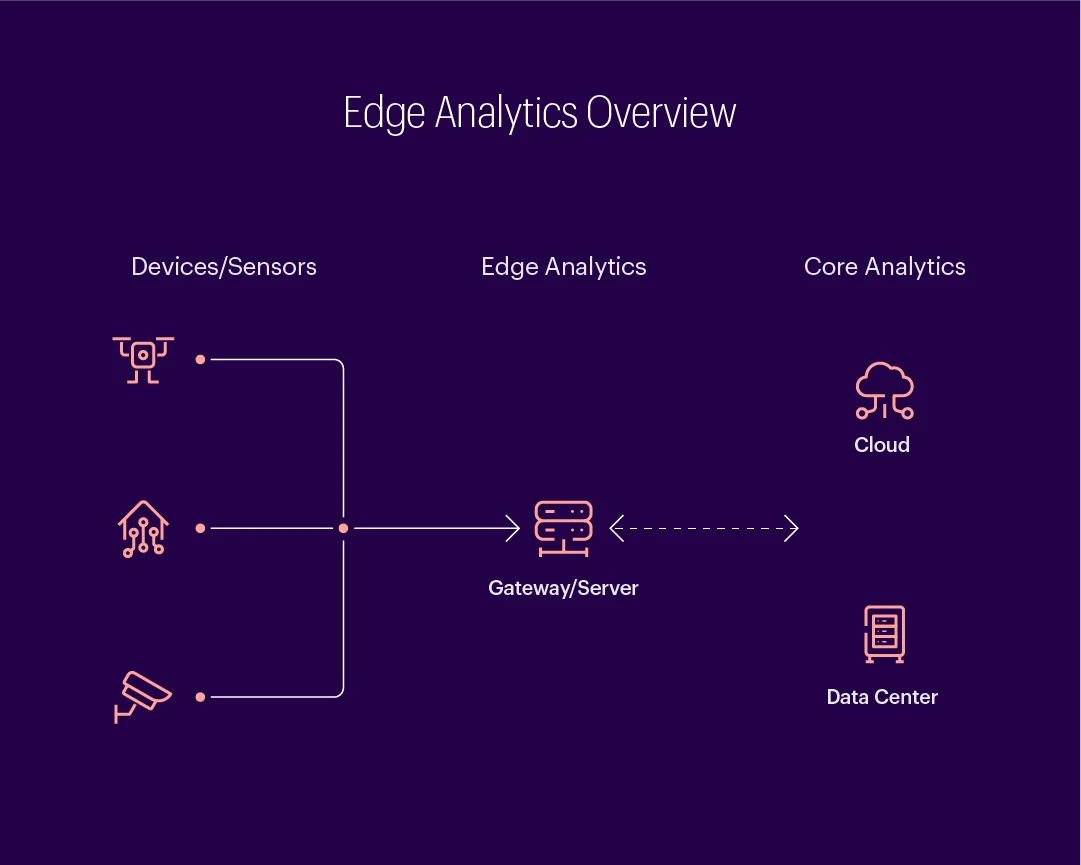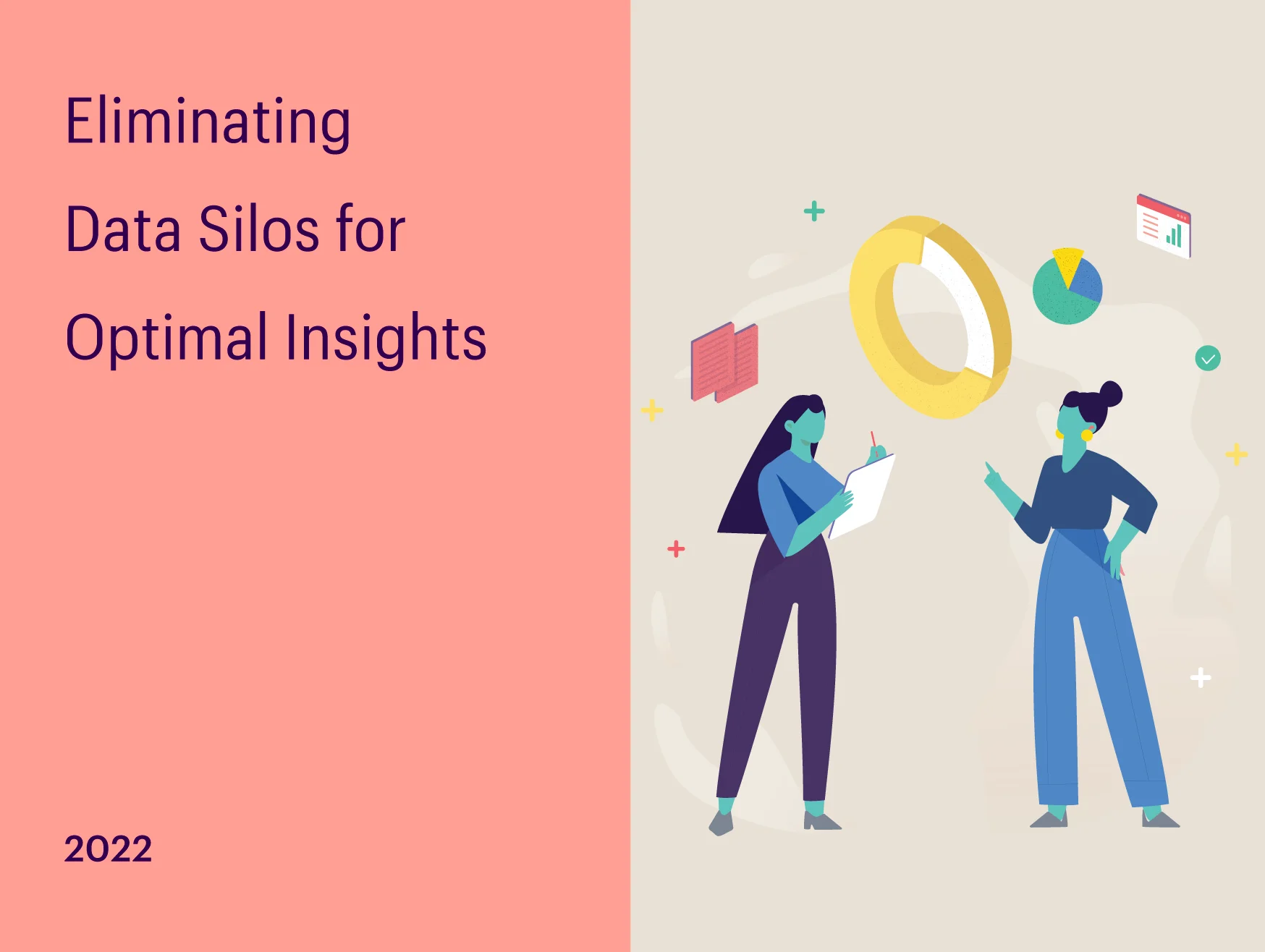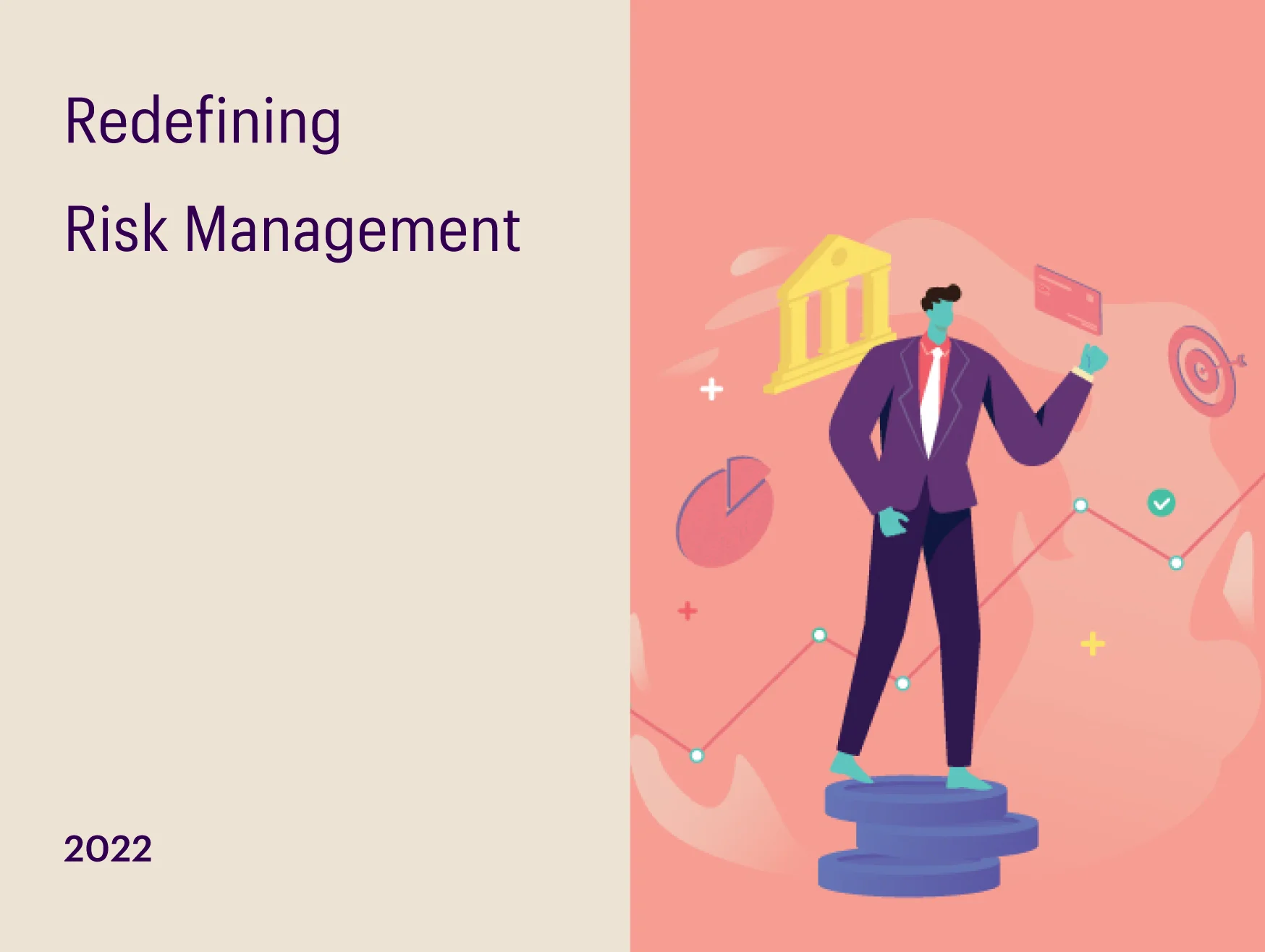As Industry 4.0 continues to gain momentum, asset-intensive companies have started harnessing the power of the Industrial Internet of Things (IIOT) and AI to enhance their operational efficiency and asset reliability [1]. And one by-product of this paradigm shift is the growing significance of predictive maintenance (PdM). As we explained in parts 1 & 2 of our predictive maintenance series, PdM involves real-time monitoring of machinery and equipment to anticipate anomalies, breakdowns, and failures and proactively make any fixes required. Projected to reach USD 64.4 billion by 2030 h[2], the PdM market is growing exponentially. But as more companies start integrating PdM practices, how can they unlock their full potential and gain a competitive advantage?
Enter edge analytics; a relatively new approach for collecting, processing, and analyzing data locally, within a network. Compared to traditional analytics that involves data transmission to cloud or data warehouses, edge analytics processes and analyzes data at non-central components of the network, such as sensors, switches, peripheral nodes, and several other connected devices.
In this article, we will explore the concept of edge analytics and explain how it benefits PdM practices.
What is edge analytics?
Edge analytics is a decentralized method of data analysis. Due to the rising number of IoT devices used in the manufacturing industry, the amount of data generated has also grown proportionally. For companies, handling this massive volume of operational data comes with numerous challenges related to data management, storage [3], and transmission [4]. And edge analytics provides the perfect solution to overcome these challenges.
By running data through an analytics algorithm right there on the devices or sensors, edge analytics minimizes the need for data transmission and storage. And more importantly, it reduces the latency in decision-making processes. Take the everyday example of a smartwatch, which monitors the user’s physical activity, heart rate, etc., and sends out warnings or recommendations right away. Here, the device does not transmit the data it collects to the cloud or any centralized data centers. Instead, through the power of IoT and edge analytics, it analyzes the data collected from various inbuilt sensors in real-time to generate immediate insights.

Benefits of edge analytics in PdM
The edge analytics space is going to witness explosive growth in the near future. According to a Gartner research report, by 2023, over 50% of the primary responsibility of data and analytics leaders will include data management and analysis in edge environments. And, in industrial practices like PdM, where faster data turnaround is vital, edge analytics can be a potential game changer that could take predictive maintenance to the next level and provide a competitive advantage to companies deploying the technology.
Here are the benefits of integrating edge analytics into PdM practices.
1) Real-time data analytics:
Compared to traditional big data analytics, which requires data transfer to the cloud or a centralized data center, edge analytics can conduct real-time analysis on the device itself. Especially for predictive maintenance models deployed on mission-critical systems, it can be the differentiating factor for reducing latency [5] and downtime.
For example, a renowned American multinational technology company identified the inability to decipher data in real-time as one of the drawbacks of current PdM models. And to optimize PdM practices, the company has decided to update its legacy tech stacks by investing in edge computing-based, AI-driven tech stacks that can deliver faster insights and alerts [6].
2) Lower data storage costs:
With huge volumes of raw industrial data such as humidity, temperature, motion, vibration, and more to work with, another challenge for PdM models is the growing cost of data storage. Storing data on the cloud or centralized data centers involves significant business expenditures and investments. By processing the majority of the data locally or on-site, edge analytics minimizes the need for data storage, thereby reducing costs attributed to it.
3) Minimal data transmission:
Data transmission is another critical element of PdM. A traditional predictive maintenance model will require data to be transferred to a central point or cloud, conduct the analysis, and transmit the actionable insights back into the system or devices. This back-and-forth involved in data transfer is time-consuming, and the system could face challenges related to network bandwidth. By moving a big part of this process to the edge networks, the PdM system can bypass bandwidth constraints and even function in locations where cloud connectivity is unavailable.
Readiness for adopting edge analytics for PdM
Even though edge analytics can enable autonomous asset management with enhanced connectivity and insight-driven operations, its adoption could involve governance and integration challenges. As major manufacturing companies are too focused on traditional analytical models to ensure data security, privacy, and quality, they are often underprepared to adapt and handle the complexities of a more decentralized edge environment.
Legacy systems are often deeply embedded in the organizational framework. Furthermore, resources, operational principles, architectures, and tools are designed based on typical data centers or cloud deployment analytical models, making the governance and integration of a distributed edge environment tricky and difficult.
In order to tap into the benefits that edge analytics-based PdM promises while overcoming these challenges, instead of making a complete shift, companies can start with a combination of cloud or server-based analytics and edge-analytics for optimizing their predictive maintenance framework first.
Bibliography
1. Chawla, Manish. “Applying Iiot and AI to Midstream Asset Management.” Plant Engineering, September 10, 2021. https://www.plantengineering.com/articles/applying-iiot-and-ai-to-midstream-asset-management/.
2. Vailshery, Lionel Sujay. “Predictive Maintenance Market Size Worldwide 2020-2030.” Statista, January 2022. https://www.statista.com/statistics/748080/global-predictive-maintenance-market-size/.
3. Handy, Jim. “How to Plan for a Potential Data Storage Shortage: TechTarget.” Storage, July 27, 2022. https://www.techtarget.com/searchstorage/feature/How-to-plan-for-a-potential-data-storage-shortage.
4. Bigelow, Stephen J. “Breaking down the Costs of Cloud Storage: TechTarget.” Cloud Computing, January 16, 2017. https://www.techtarget.com/searchcloudcomputing/tip/Breaking-down-the-costs-of-cloud-storage.
5. Research, KBV. “Global Edge Analytics Market Size, Share & Industry Trends Analysis Report by Component, by Type, by Organization Size, by Vertical, by Regional Outlook and Forecast, 2022 – 2028.” ReportLinker, May 2022. https://www.reportlinker.com/p06289238/Global-Edge-Analytics-Market-Size-Share-Industry-Trends-Analysis-Report-By-Component-By-Type-By-Organization-Size-By-Vertical-By-Regional-Outlook-and-Forecast.html?utm_source=GNW.
6. Colombus, Louis. “How Nvidia Is Harnessing AI to Improve Predictive Maintenance.” VentureBeat, March 30, 2022. https://venturebeat.com/ai/how-nvidia-is-harnessing-ai-to-improve-predictive-maintenance/.



